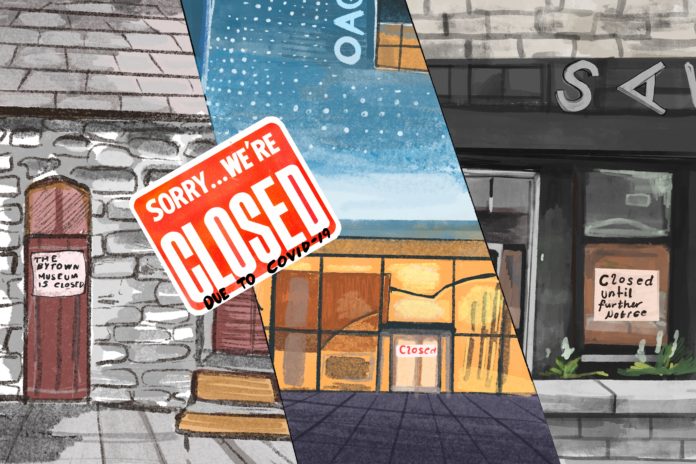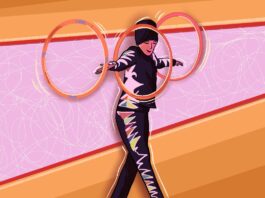The COVID-19 crisis delivered a fierce blow to museums — forcing them to shut their doors, many of which may never reopen.
According to a report by the United Nations Educational, Scientific, and Cultural Organisation (UNESCO), 90 per cent of 95,000 UNESCO-recognized museums worldwide have experienced closures. As a result of projected decreases in funds from sponsors and donors paired with a collapse in international tourism, an estimated one in 10 museums could permanently shut down due to bankruptcy.
Robin Etherington, executive director of the Bytown Museum, explained how the COVID-19 closures have created some financial challenges for the museum due to the fact that half of its budget comes from self-generated revenue, which significantly decreased since the museum closed its doors on March 13. due to the fact that half of their budget comes from self-generated revenue.
“Even if we’re given the green light to open today, it would still take us one to two months and around $15,000 to retrofit the museum and be in compliance with the safety regulations for social distancing,” Etherington said.
She explained that the Bytown Museum had conducted two financial projections, one in which the museum plans to open in August and one in which they do not open at all.
“It will cost us more to open than to remain closed,” Etherington added.
Despite the challenges, Etherington is more concerned about what the future holds since the Bytown Museum has successfully applied for the wage subsidy program, as well as several grants which have allowed the museum to keep its staff on, who have continued working from home.
Etherington predicts that in the next couple of years, government funding will dramatically decrease for the museum sector as the different levels of government work to balance budgets.
“You always have to be looking at the silver lining,” Etherington said in the face of these challenges.
The disruptions caused by the pandemic forced museums and galleries to get creative and develop an online presence to keep their doors virtually open.
The UNESCO report identified over 800 initiatives in response to the pandemic from the museum sector including the development of virtual museums, as well as the transformation of many activities including ongoing exhibitions, conferences, and outreach activities onto digital platforms. Heather Anderson, the curator of the Carleton University Art Gallery (CUAG), found the process of shifting to an online platform to be one that requires a tremendous amount of effort and learning.
“It’s very important to think about how you best serve your community, your audience, how do you continue to creatively work with and support artists,” Anderson said. “It’s about being reflective and responsive to the situation.”
CUAG’s digital initiatives focus on engaging their audience and amplifying the work of artists through social media platforms. Anderson explained in an email that the core of their digital experience centers around exhibiting their digitized art through their mailing list and Instagram platform.
The initiative connects the public with artists and cultural activists in the Ottawa-Gatineau community. Some of the featured artists include the works of artist Norman Takeuchi, musician and Carleton University professor Jesse Stewart, and interdisciplinary artist Émilie Monnet.
Anderson said that these digital programs provide audience members with a space where they can engage with creative content for a few moments of time and provide opportunities for artists to be paid for their contributions.
CUAG has not been alone in focusing its efforts on supporting local artists.
Director Tam-Ca Vo-Van of Galerie SAW Gallery explained how the pandemic made it necessary to reflect on supporting artists in a different way.
“Like many other organizations, we explored ways we could bring our programming online but we also had a lot of reflection on how for some artists the online platform is not necessarily ideal for presenting their work,” Vo-Van said. “Instead we thought of ways to support artists with production grants, programs, and awards that go directly to artists.”
Because in-person connection is such an integral part of the artists’ work, Vo-Van said new measures may be implemented to overcome COVID-19.
“There is a lot we can do to try and substitute our live events, to reduce risks and contact, but it’s very difficult for us to imagine those activities without that component of people gathering especially at SAW, people coming together is such an important part of our identity,” Vo-Van added.
For the Bytown Museum, the pandemic has allowed them to enhance their online offerings and social media presence.
Already, the museum has a virtual tour available on its website as well as an audio tour available in six languages. Throughout the pandemic, employees continued to digitize its collection with over 5,000 records and 2,000 images available for public access. The museum is also planning to film regular tours to put them online and develop school-based programming. According to Etherington, museums and galleries are in a great position to provide authentic information and experiences to students and the public.
“We will never go back to how things were pre-pandemic,” Etherington said. “But we will always continue to put more and more of our services online. That is our future.”
Featured image by Sara Mizannojehdehi.




